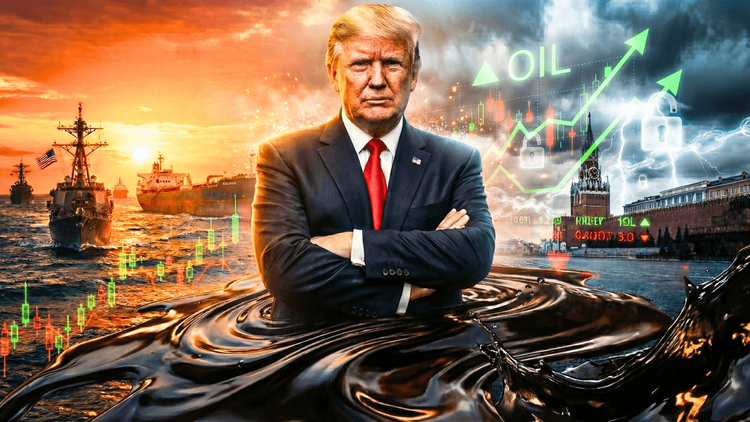Australia Greenlights World's Largest Solar Farm
Australia's Bold Step Towards a Green Future: A $24 Billion Solar Project Set to Transform the Global Energy Landscape

Australia has taken a bold step forward in the global race towards renewable energy by approving what is set to be the world's largest solar farm. On Wednesday, the Australian government greenlit the ambitious SunCable project, a massive solar and battery farm that promises to power millions of homes domestically while exporting electricity to Singapore. With an investment of US$24 billion, this project not only underscores Australia’s commitment to clean energy but also positions the nation as a global leader in the renewable energy sector.
Project Details
The SunCable project is nothing short of monumental. Slated to be the largest solar precinct in the world, the farm will harness the vast solar resources of Australia’s remote northern regions. The project’s scope includes an expansive array of solar panels and battery storage systems, designed to generate a staggering four gigawatts (GW) of energy for domestic use. An additional two gigawatts of energy will be exported to Singapore via an undersea cable, potentially supplying about 15% of the city-state’s electricity needs.
Backed by tech billionaire and green activist Mike Cannon-Brookes, the project represents a significant leap in renewable energy capabilities. Environment Minister Tanya Plibersek lauded the initiative, declaring it a key milestone in Australia’s transition towards becoming a world leader in green energy. The energy production is expected to commence by 2030, marking a significant milestone in the global shift away from fossil fuels.
Significance for Australia
The approval of the SunCable project is a game-changer for Australia. Economically, it brings a US$24 billion injection into the nation’s economy, creating an estimated 14,300 jobs in the Northern Territory. The project is also poised to enhance regional development, particularly in remote areas that will benefit from infrastructure investments and employment opportunities.
Environmentally, the project is a critical step in reducing Australia’s reliance on fossil fuels. Despite being one of the world’s leading exporters of coal and gas, Australia has been increasingly feeling the impacts of climate change, from extreme heat to devastating bushfires. The SunCable project not only contributes to meeting Australia’s energy needs but also helps the country move closer to its net zero emissions target by 2050.
International Implications
The SunCable project has far-reaching implications beyond Australia’s borders. Singapore, with its limited land and renewable energy resources, stands to gain significantly from this initiative. By receiving 15% of its electricity from the Australian solar farm, Singapore can reduce its dependency on fossil fuels and enhance its energy security.
However, the project’s success hinges on gaining approvals from Singapore’s energy market authority, Indonesia’s government, and Australian Indigenous communities. The undersea cable, which is critical to the export of energy to Singapore, must pass through Indonesian waters, necessitating diplomatic and regulatory approvals. This international collaboration underscores the growing interconnectedness of energy markets and the shared global commitment to renewable energy.
The Vision of a Clean Energy Future
The SunCable project is a cornerstone of Australia’s broader vision for a clean energy future. As countries worldwide accelerate their shift towards renewable energy, Australia’s vast solar and wind resources position it as a potential clean energy powerhouse. The SunCable project aligns perfectly with global trends, where major economies are increasingly investing in renewable infrastructure to reduce carbon emissions and combat climate change.
Australia’s commitment to achieving net zero emissions by 2050 requires a massive expansion of renewable energy capacity. According to experts, the nation will need approximately 100 gigawatts of solar and wind capacity by the 2030s. The SunCable project, while significant, is just the beginning of a much larger effort needed to meet these ambitious targets.
Challenges and Hurdles
Despite Wednesday’s approval, the SunCable project still faces several challenges. Gaining the necessary sign-offs from Singapore, Indonesia, and Australian Indigenous communities is a complex process that involves navigating various regulatory, diplomatic, and social hurdles. The involvement of Indigenous communities is particularly critical, as their consent and collaboration are essential for the project’s success.
Moreover, the technical challenges associated with the project are formidable. The installation of the undersea cable, which will stretch over 4,200 kilometers, presents significant engineering and environmental challenges. Ensuring the reliability and sustainability of the solar farm’s operations in the remote and often harsh conditions of Northern Australia will also require innovative solutions.
Economic Impact
The economic benefits of the SunCable project are substantial. With an investment of US$24 billion, the project will significantly boost the Australian economy, particularly in the Northern Territory, where most of the construction and operations will take place. The creation of 14,300 jobs will provide a much-needed economic stimulus to the region, contributing to long-term growth and development.
Beyond job creation, the project positions Australia as a leader in the global clean energy market. As the world increasingly shifts towards renewable energy, Australia’s ability to export green energy to other countries, such as Singapore, could open new economic opportunities and revenue streams.
Environmental Impact
From an environmental perspective, the SunCable project is a major step forward in reducing carbon emissions and combating climate change. By replacing fossil fuel-based electricity generation with solar power, the project will contribute significantly to lowering Australia’s greenhouse gas emissions. This transition to renewable energy is crucial for mitigating the impacts of climate change, which are already being felt across the country in the form of extreme weather events.
In comparison to other global renewable energy projects, SunCable stands out not only for its scale but also for its potential to set new standards in sustainable energy production. The project’s success could inspire similar initiatives worldwide, further accelerating the global shift towards clean energy.
Technological Innovations
The SunCable project is also a showcase of technological innovation in renewable energy. The sheer scale of the solar and battery installations, combined with the complexity of the undersea cable, represents a significant advancement in renewable energy infrastructure. These innovations are essential for overcoming the challenges of energy storage and long-distance transmission, which are key to making renewable energy viable on a large scale.
Tech billionaire Mike Cannon-Brookes has been a driving force behind the project, bringing both financial resources and visionary leadership. His involvement highlights the growing role of private sector investors in the renewable energy sector, where innovation and capital are critical to driving progress.
Australia’s Renewable Energy Landscape
Australia’s energy landscape is undergoing a significant transformation. Currently, coal remains a dominant source of electricity, contributing 47% of the nation’s total electricity generation in 2022. However, renewable energy sources, including solar and wind, are rapidly gaining ground, accounting for 32% of electricity generation.
Government policies have played a crucial role in supporting this transition, although progress has been uneven. While some administrations have been hesitant to fully embrace renewables, public opinion strongly favors the shift towards clean energy, as evidenced by the widespread adoption of household solar panels.
Global Leadership in Green Energy
With the approval of the SunCable project, Australia is positioning itself as a global leader in green energy. The project’s scale and ambition are unparalleled, placing Australia at the forefront of the global renewable energy movement. This leadership is particularly important as the world seeks to transition away from fossil fuels and towards sustainable energy sources.
Comparisons with China, the current leader in renewable energy capacity, highlight the significance of Australia’s efforts. While China is building renewable energy infrastructure at an unprecedented pace, Australia’s SunCable project represents a unique model of cross-border energy collaboration that could serve as a blueprint for other nations.
Community and Indigenous Relations
The success of the SunCable project depends not only on technological and economic factors but also on the involvement and consent of local communities, particularly Indigenous groups. The project has the potential to bring significant benefits to these communities, including employment opportunities and infrastructure development. However, it is essential that these benefits are realized in a way that respects and honors Indigenous rights and cultural heritage.
Navigating the social and cultural sensitivities associated with the project will be critical to ensuring its long-term success. Building strong relationships with Indigenous communities and ensuring their active participation in the project’s development are key priorities for SunCable.
Future Prospects
Looking ahead, the SunCable project could pave the way for further expansion of Australia’s renewable energy capacity. With the growing global demand for clean energy, there is significant potential for additional projects that build on the success of SunCable. The long-term vision for Australia’s energy exports includes not only electricity but also other forms of renewable energy, such as hydrogen.
The SunCable project is just one part of a broader strategy to transform Australia into a clean energy export powerhouse. As the world moves towards a more sustainable energy future, Australia’s role in this transition will only grow in importance.
Political and Regulatory Landscape
The approval and implementation of the SunCable project are deeply intertwined with the political and regulatory landscape in Australia, Singapore, and Indonesia. The project’s success depends on navigating a complex web of government approvals, international agreements, and regulatory requirements.
In Australia, the federal government’s support for the project reflects its broader commitment to renewable energy. However, the project must also secure the necessary approvals from Singapore’s energy market authority and Indonesia’s government, both of which play critical roles in the project’s international components.
The political negotiations and regulatory processes involved in the project will be closely watched by other countries, as they could set important precedents for future cross-border renewable energy projects.
Conclusion
The approval of the SunCable project marks a significant milestone in Australia’s journey towards a sustainable energy future. As the world’s largest solar farm, the project not only positions Australia as a global leader in renewable energy but also sets the stage for a new era of international energy collaboration. With the potential to power millions of homes and contribute to global efforts to combat climate change, the SunCable project is a shining example of what can be achieved when innovation, investment, and environmental stewardship come together.






